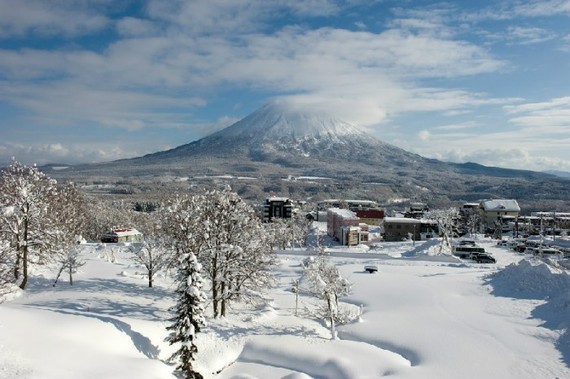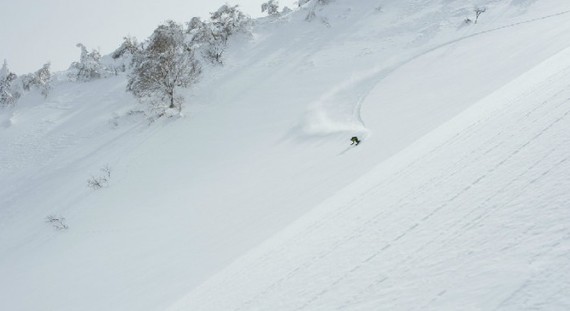The Land of the Rising Sun has a rising reputation in the ski world. Although Japan hosted the 1972 and 1998 Winter Olympics, the island nation's international standing as a recreational ski destination has only started to make a huge leap in the past 10 years. Australians traveling up during their summers were the first foreigners to discover "Ja-Pow," particularly in the resort of Niseko on the northern island of Hokkaido. Coming from America, Warren Miller ski-film crews, ski photographers and a first wave of adventurous travelers are now enjoying the region.
Niseko is made of four interconnected sections named for the four base areas of Niseko Village, Annupuri, Hirafu and Hanazono. It includes about 2,800 skiable acres with a vertical drop of about 3,500 feet.
Deep Skiing
With a summit elevation of only 4,260 feet, Niseko's topography and weather provide a wonderful combination that seems almost like a contradiction to North American visitors. Niseko receives loads of snow driven by coastal weather patterns, but the snow has a low-water content close to that found in Utah. Earning the "Ja-Pow" nickname, an average of 600 inches of dry powder falls each season. In general, the skiing is more deep, than steep. For an American comparison, think Grand Targhee, rather than Jackson Hole.
"The traditional Japanese ski culture would be very much skiing down the piste. Niseko is very much not a Japanese ski resort in that sense. It really is an international ski resort," said Chris Pickering, executive director of HT Holidays, a ski-accommodation provider in Niseko. "The main draw is the powder and the quality of snow. In the resort's off-piste areas, you see people who are chest-deep in powder nearly every day. The Japanese culture here became more freestyle, laid-back, and a little bit sort of hippie. The skiers and snowboarders here are really all about the powder."
International Destination
As the most famous Japanese resort internationally, Niseko also has more of a Western cultural flavor off the slopes than some of the lesser-known ski areas. While that may be a downside for some, many first-time visitors to Japan appreciate the ease of widely spoken English. Ski areas such as Asahidake and Furano tend to have a more authentic Japanese character. Furano, however, does still have available English-speaking ski instructors. International travelers to Hokkaido fly into the city of Sapporo, then take a bus or train a few hours up to the ski areas.
According to Pickering, Niseko's busiest seasons are the expected Christmas and New Year's holiday span and the not-so-expected Chinese New Year that varies each year on the Western calendar (anytime from late January into early February). Pickering also said that booking lodging as soon as late April for the following season is a good idea for those busy times. Despite Japan's expensive reputation, ski-area lodging is often less expensive than an equivalent at American resorts. Lift tickets will also seem inexpensive to American visitors--a one-day Niseko lift-ticket costs $53.
About a 5-hour bus ride from Tokyo, Hakuba Happo-one is the most famous ski area on the southern main island of Honshu, because it served as the competition venue for the 1998 Nagano Winter Olympics. Hakuba does not have quite the powder reputation of Hokkaido, but an average annual snowfall of about 430 inches does still translate into plenty of powder days.
Starting with the 11-hour Los Angeles to Tokyo flight, skiing in Japan requires some serious effort for North American travelers. Nonetheless, Pickering said the increasing numbers who make that effort find a powdery reward. "Everyone comes down with this huge smile on their face, usually covered in snow, and they are sort of gobsmacked by the depth of the powder and the fact that you don't have to go anywhere to find it."




